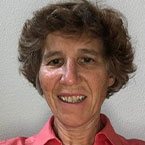By: Rosalyn Singleton, MD, MPH, FAAP
Respiratory syncytial virus (RSV) is a leading cause of respiratory infections in infants and children worldwide. American Indian and Alaska Native infants have high rates of hospital stays for RSV lung infections.
Until now there were few ways to prevent or treat RSV. But new immunizations are available that help protect your family from severe infections.
Read on to learn how RSV spreads and what to do to prevent it.
When does RSV spread?
Like the flu, RSV typically spreads in communities every winter. But the timing of yearly RSV varies widely by U.S. region.
When are people at highest risk for RSV?
Anyone can get RSV. But it is more common and more harmful for babies, toddlers and older adults.
Most children get RSV sometime during infancy or early childhood. Infants are at the highest risk for severe RSV. Older children and adults who get infected with RSV usually have mild illness and may have
symptoms of a cold.
Symptoms of RSV
RSV causes a runny nose and perhaps a cough or fever. Most children get better on their own. Some children get wheezing or lung infections.
Young infants and infants born prematurely or with heart or lung conditions like asthma are at higher risk of severe RSV. Fast breathing, tugging in the chest with breathing, not wanting to eat or drink and very low energy are warning signs of more severe RSV. You should seek medical care if your child shows any of these symptoms.
RSV infections in American Indian and Alaska Native children
Studies have shown that American Indian and Alaska Native infants have high rates of severe RSV. Rates in
some communities in Alaska and the southwestern United States are up to seven times higher than in other U.S. children.
Things like not having running water, living in a crowded home, and having a wood stove for heat inside the home have caused
some young children to get very sick with RSV. And some must travel long distances to get health care.
Can RSV infections be prevented?
There are things you can do to protect your child from RSV. Washing hands, breastfeeding and limiting child care and smoke exposure can help.
And there are two RSV immunizations. Both protect the baby. Here is what to know about each one.
RSV immunization for infants
The immunization for infants is called nirsevimab, and it shows great promise in protecting against severe RSV. The American Academy of Pediatrics supports access to this lifesaving immunization for all infants under age 8 months during RSV season. Some children also should get a second dose during their second RSV season.
Nirsevimab is a monoclonal antibody. From this injection (shot), antibodies are passed directly to your baby for instant protection that will last for several months. This is different from
how vaccines work. Vaccines teach the immune system to make antibodies so your body will know how to respond if you are exposed to an infection later.
Nirsevimab is recommended for American Indian and Alaska Native infants and toddlers who are up to 19 months of age during RSV season. They get one dose during their first RSV season and one dose during their second RSV season.
RSV season is typically October through March, but the season may vary depending on where you live.
RSV vaccine for pregnant people
The RSV vaccine for pregnant people is called Abrysvo.
If you are pregnant and your baby will be born during RSV season, you can get Abrysvo at any time between 32 and 36 weeks of pregnancy. Only one dose of Abrysvo is recommended.
When you get the RSV vaccine during pregnancy, the antibodies—including the ones your body makes from vaccines during pregnancy—pass protection (immunity) to your baby before birth. This protection lasts for about 3 to 6 months after they are born.
If the pregnant person got the RSV vaccine (Abrysvo), the baby is protected for the first RSV season. During their second RSV season, American Indian and Alaska Native children ages 8 to 19 months should get nirsevimab.
Remember
RSV is an important respiratory infection. It has caused severe illness for many more American Indian and
Alaska Native infants than for other children in the U.S. RSV immunizations can help prevent severe infections. Talk with your health provider to find out more.
More information
About Dr. Singleton
 Rosalyn Singleton, MD, MPH, FAAP, enjoyed a rich career in Native American health, first as a pediatrician in a Navajo hospital in Chinle, Ariz., in 1985-'88, and then as pediatrician and researcher for Alaska Native Tribal Health Consortium until retiring in 2023. She continues as a guest researcher at Arctic Investigations Program at the Centers for Disease Control and Prevention. She has partnered with Alaska Native people on clinical research to prevent bacterial and respiratory infections. Rosalyn Singleton, MD, MPH, FAAP, enjoyed a rich career in Native American health, first as a pediatrician in a Navajo hospital in Chinle, Ariz., in 1985-'88, and then as pediatrician and researcher for Alaska Native Tribal Health Consortium until retiring in 2023. She continues as a guest researcher at Arctic Investigations Program at the Centers for Disease Control and Prevention. She has partnered with Alaska Native people on clinical research to prevent bacterial and respiratory infections.
|